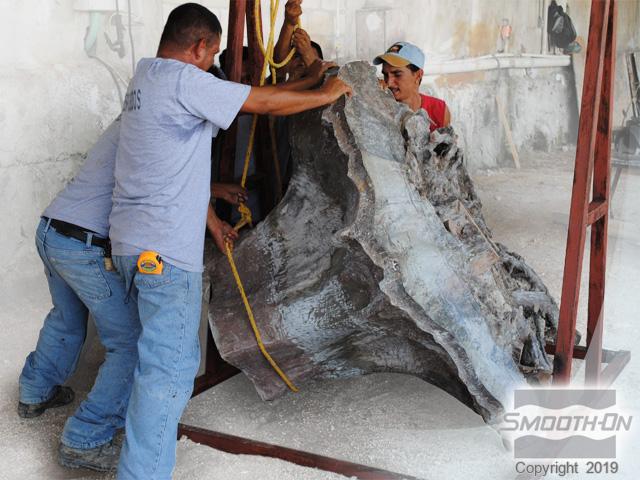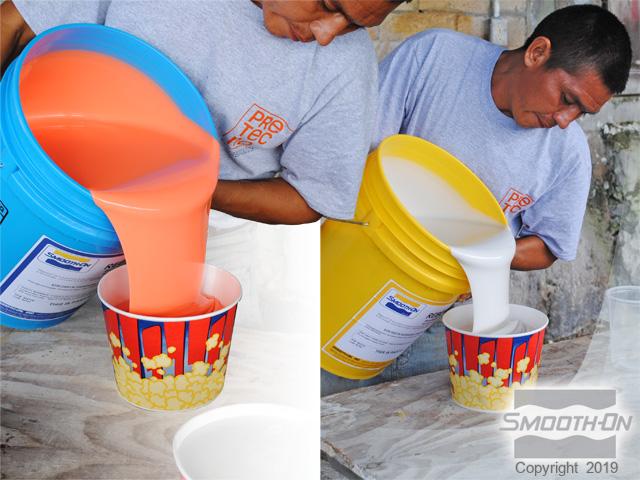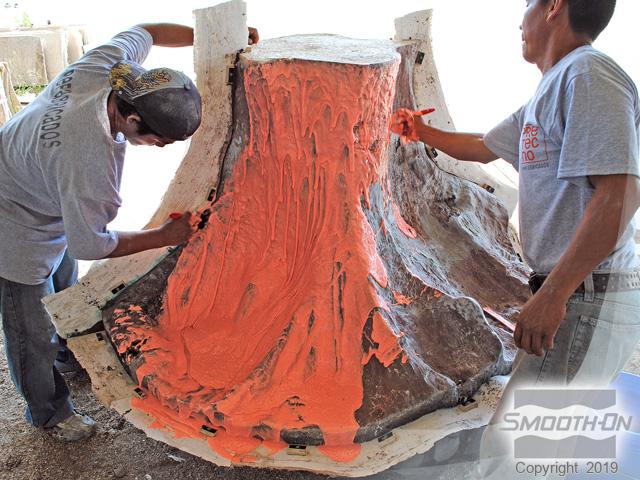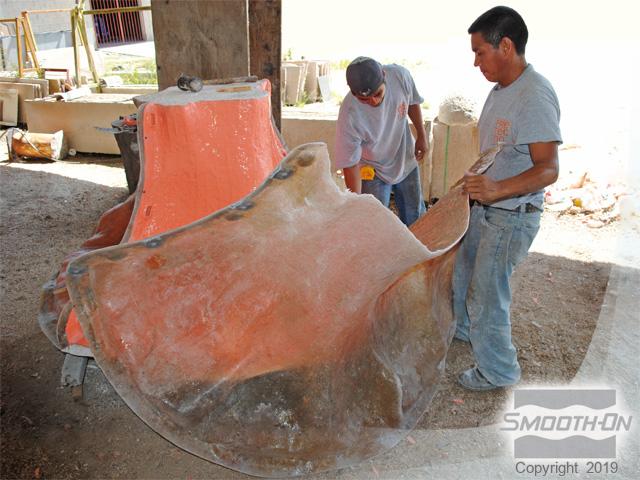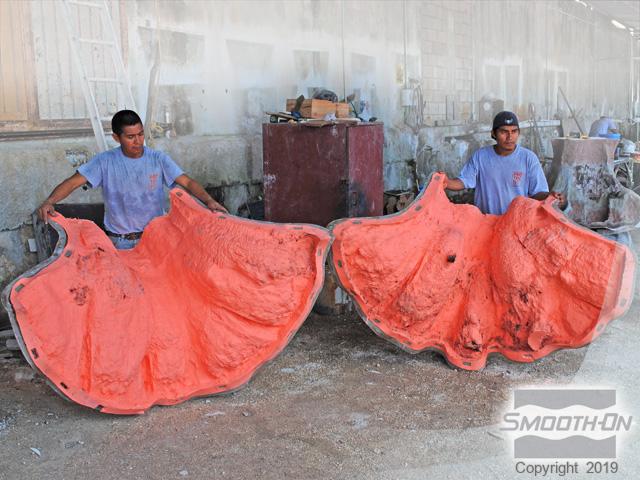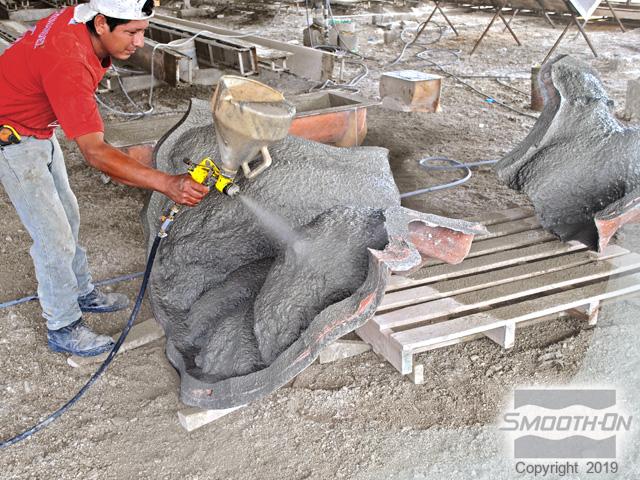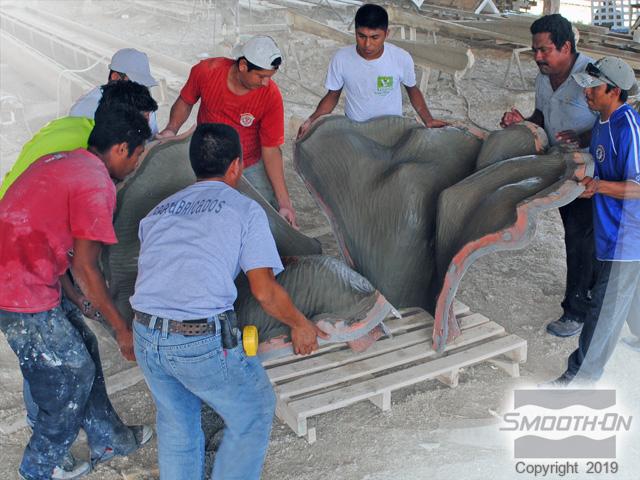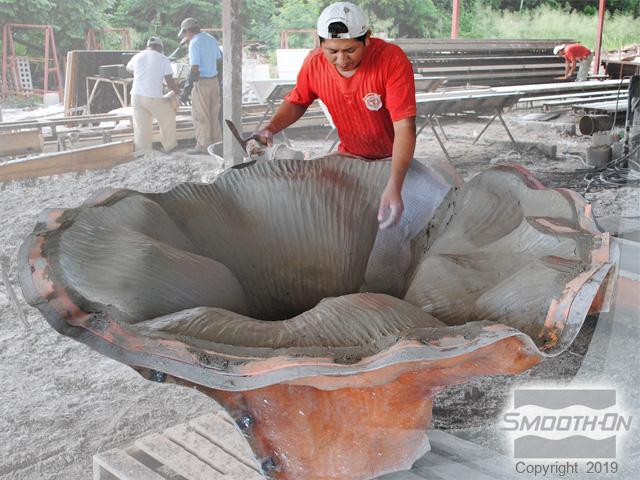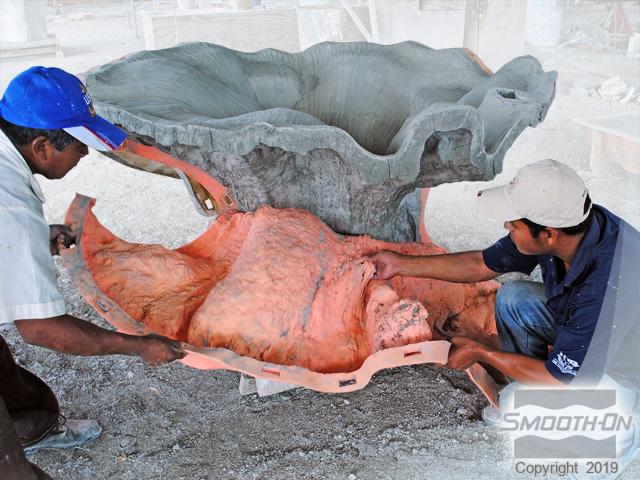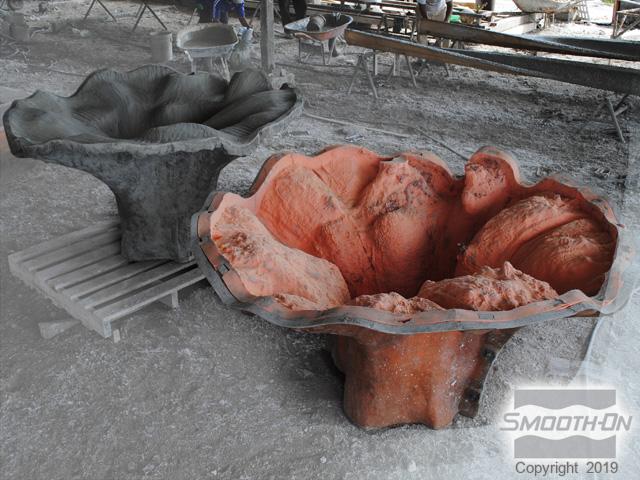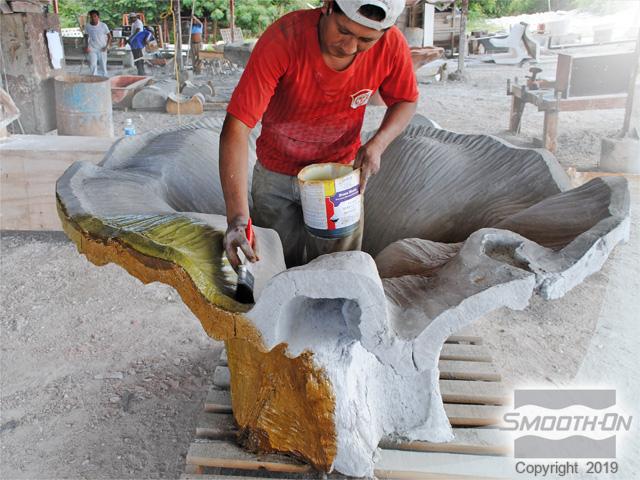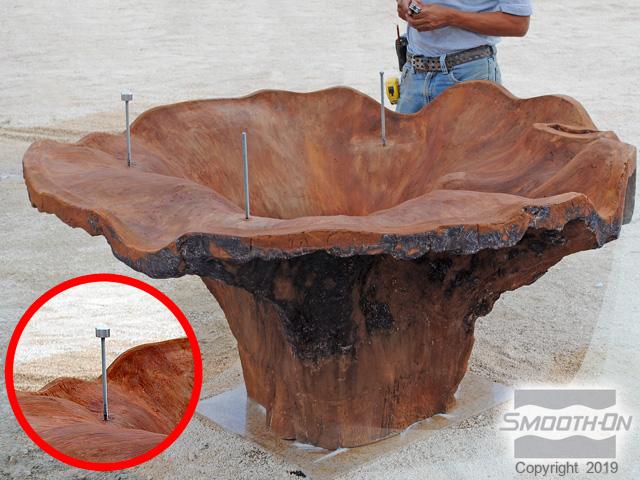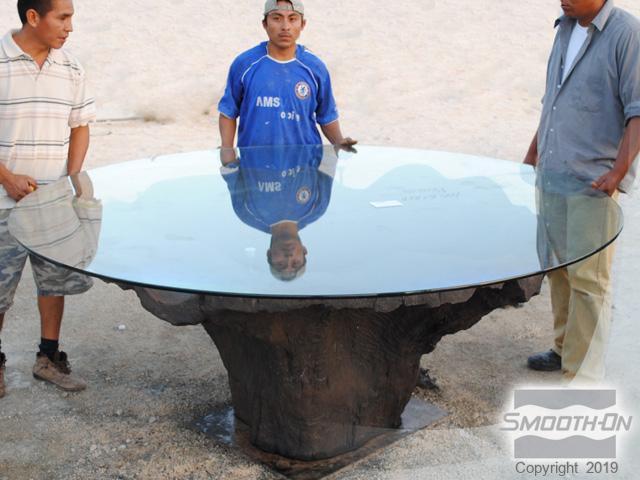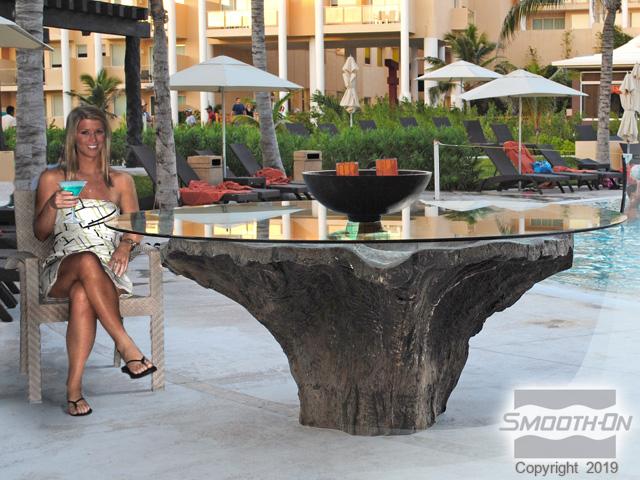How To Create a GFRC Table using Rebound™ 25 Silicone Rubber
Overview
Averaging 2.5 hurricanes per year since 1875, the Yucatán Peninsula in Mexico knows the devastating power that these storms unleash.
If you operate a holiday resort in Cancún you come to view hurricanes as almost routine and do your best to protect your guests and staff, as well as minimize physical damage to your resort.
One area that is always an expensive challenge to manage is the hundreds of tables, chairs and other amenities that make guests comfortable. Many pieces are destroyed by a single storm and the cost of replacing this furniture on a regular basis is enormous.
GFRC Market Opportunity – OBRaTUR, S.A. of Cancún has seen this destruction many times over the years and developed an idea to create furniture using glass fiber reinforced concrete that immediately got the attention of resort owners throughout Cancun and beyond. A Mexican resort owner calls GFRC furniture, "A perfect fit for our operation... unique, exciting and the next big thing".
Offering
- Fast Return on Investment
- Hurricane proof
- Limitless Design Options
- Low Maintenance
- Ecological
- Lasting Durability
Creating a GFRC table design employs the root of a Royal Poinciana tree recovered from a hurricane and brought to OBRaTUR’s production shop. At over 1,000 lbs. (454 kgs.), the root measures 4 ft. (1.2 m) high and 5.5 ft. (1.7 m) in diameter. The initial order from one resort for a Royal Poinciana tree root table;500 units.
CLICK HERE to view a companion GFRC Lounge Chair photo gallery.
Materials Used in this Tutorial
- Rebound 25
- Sonite Wax
- Mixing Containers
- Brushes
- Drill Mixer
- Mesh Fiber
- Leveling Posts
- Glass Top
Step 1: Preparing Model
The tree root is positioned and prepared for making the mold. Parting shims are used to divide the root model in half and also affixed around the bottom perimeter.
Step 2: Dispensing, Applying, Demolding Rebound 25 & Support Shell
Rebound® 25 mold rubber is dispensed 1A : 1B by volume. A drill mixer is used to thoroughly mix the two parts. The mold is made in 2 halves, each consisting of four layers of rubber. A support shell is applied to each half, allowed to cure and then removed. The rubber mold is then removed from the original and it is ready for GFRC casting.
Step 3: Casting GFRC
GFRC is sprayed into the mold halves.The mold halves are brought together and secured. Mesh fiber and additional GFRC is hand applied to make seams disappear.
Step 4: Demold
The finished casting is removed from the Rebound® 25 rubber mold. The casting is now ready for post-finishing and the mold is put back into production.
Step 5: Finishing
A multi-step staining process makes the GFRC look exactly like the wood original. Leveling posts are positioned and secured to support the glass top. Once the glass top is placed, it is checked for levelness before delivery. The finished table will be enjoyed for years by resort guests.
